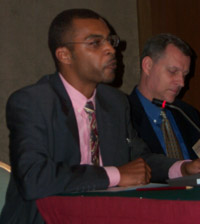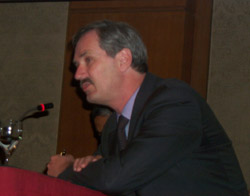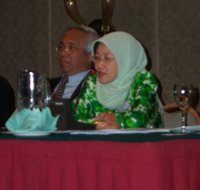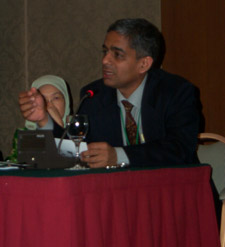 Sustainable Developments
Sustainable Developments |
|
|
|
|
|
|
 TEXT
TEXT  PDF
PDF |
|
|
 TEXT
TEXT  PDF
PDF |
| More meeting photos at ENB Inter-Linkages Snapshots |
|
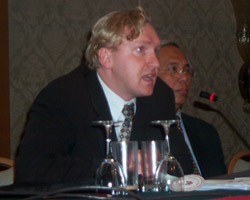
W.
Bradnee Chambers, UNU/IAS, highlighted lessons learned from the
meeting. He noted that discussions addressed the different dimensions of
synergies and inter-linkages and that, while these were found to be
complex, it has been seen that there are entry points at different
levels. He noted an increased understanding of entry points at the
regional and national level. Chambers said there is a clear need for an
assessment to be done on how the conventions are integrated and
implemented, and the need to do case studies has been identified. The
meeting also showed synergies can be approached on the basis of
clusters, tools, human health, an ecosystem approach and a bio-regional
perspective. He stressed the specific value to UNU's work of the
outputs from the working group on multi-stakeholder partnership and
participation.
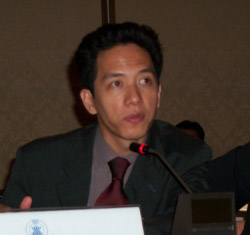
Jerry
Velasquez, UNU, highlighted UNU's strategy, action plan and
mandate. He underscored UNU's role in developing and understanding
inter-linkages, promoting an understanding among stakeholders of the
inter-linkages initiative, and promoting implementation at the
international, national, and regional level. He identified follow-up
activities as the launch of the case studies, the conference report, a
mailing list to provide information on upcoming activities, and three
follow-up meetings: the global thematic in Tokyo in July 2001, the 2nd
International Conference in July 2002, and Rio+10. He also identified
this report by the International Institute for Sustainable Development
and various other outputs from UNU.
Honorable Zakri Hamid thanked panel members, speakers and participants.
He said it has been an enriching experience and formally closed the
meeting.


